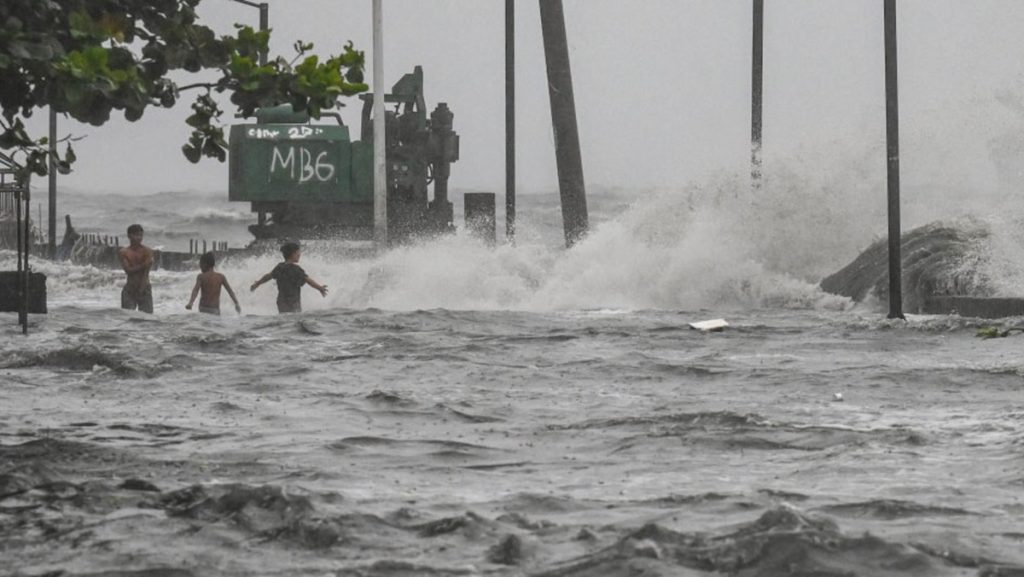Rescuers in the Philippines navigated through floodwaters, reaching chest-deep on Wednesday to reach residents trapped by Tropical Storm Trami.
The storm has led to the evacuation of thousands as it moved towards the eastern coast of the country. The heavy rains brought by the storm have transformed streets into flowing rivers, engulfed whole villages, and partially submerged some vehicles in volcanic ash dislodged by the relentless rainfall.
Authorities say at least 32,000 people in the northern Philippines fled their homes as storm Trami moved closer towards Luzon.
Unexpected high flooding in the Bicol region, about 400 kilometres southeast of the capital, Manila, complicated rescue efforts.
“We sent police rescue teams but they struggled to enter some areas because the flooding was high and the current was so strong,” regional police spokeswoman Luisa Calubaquib told AFP.
According to the national weather agency, Trami’s centre was 310 kilometres east of Aurora province, with maximum sustained winds of 85 kilometres per hour as of 8:00 am (0000 GMT).
“It’s getting dangerous. We’re waiting for rescuers,” resident Karen Tabagan told AFP.

Half of the 600 villages in Naga City, about 40 kilometres from Bato, were fully submerged by the flood.
Reacting to the situation on ground, President Ferdinand Marcos said that “the worst is yet to come”.
Speaking at an emergency meeting of government agencies on Wednesday morning, he said, “I’m feeling a little helpless here because… all we can do is sit tight, wait, hope and pray that there is not too much damage, that there are no casualties.”
Thousands of families forced to leave their homes in Bicol are currently seeking refuge in approximately 2,500 evacuation centres spread out across the region.
“There was also a lahar flow in Albay due to the rains,” Calubaquib, the Bicol police spokeswoman said, referring to the volcanic sediment flowing from the Philippines’ famous Mayon volcano.
The Philippines and its surrounding waters experience approximately 20 major storms and typhoons annually. These natural disasters cause widespread damage to homes and infrastructure and the unfortunate loss of dozens of lives.


